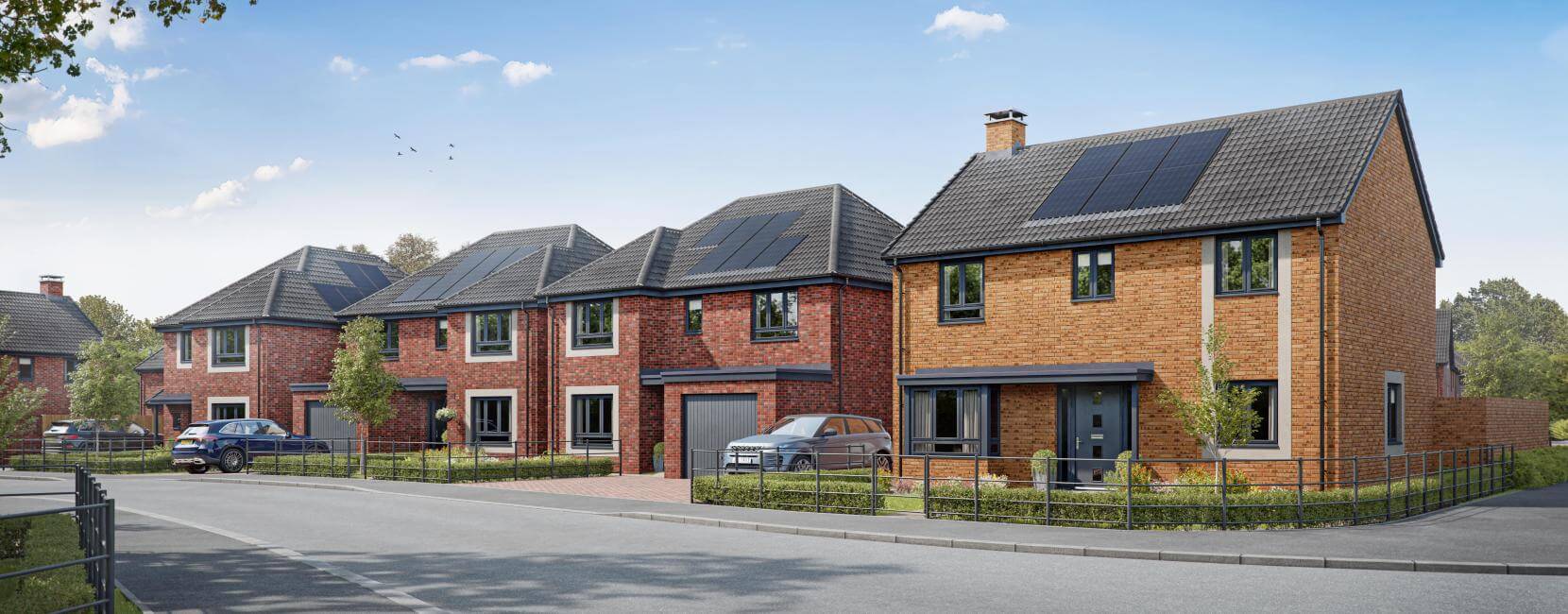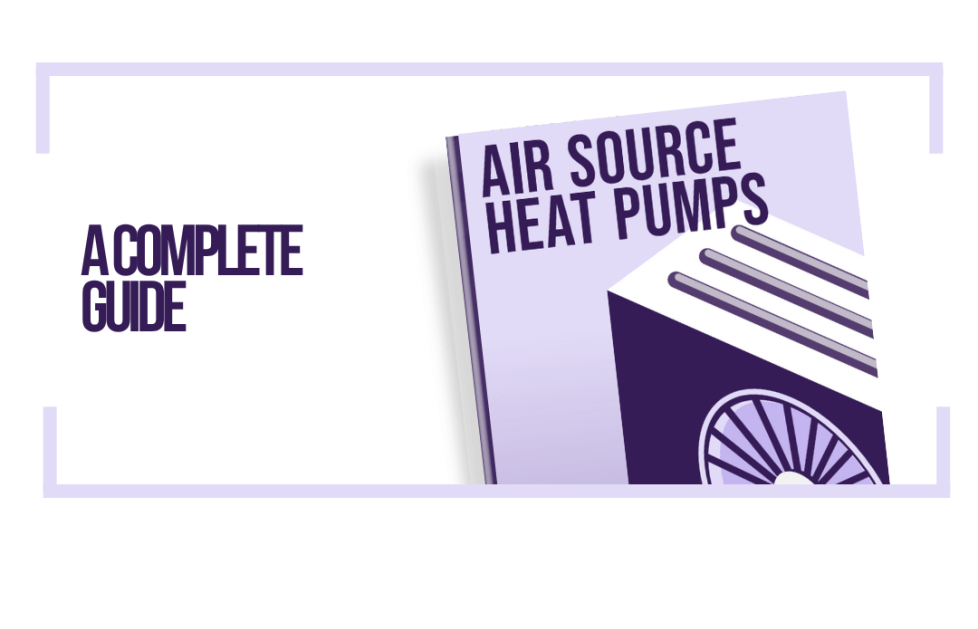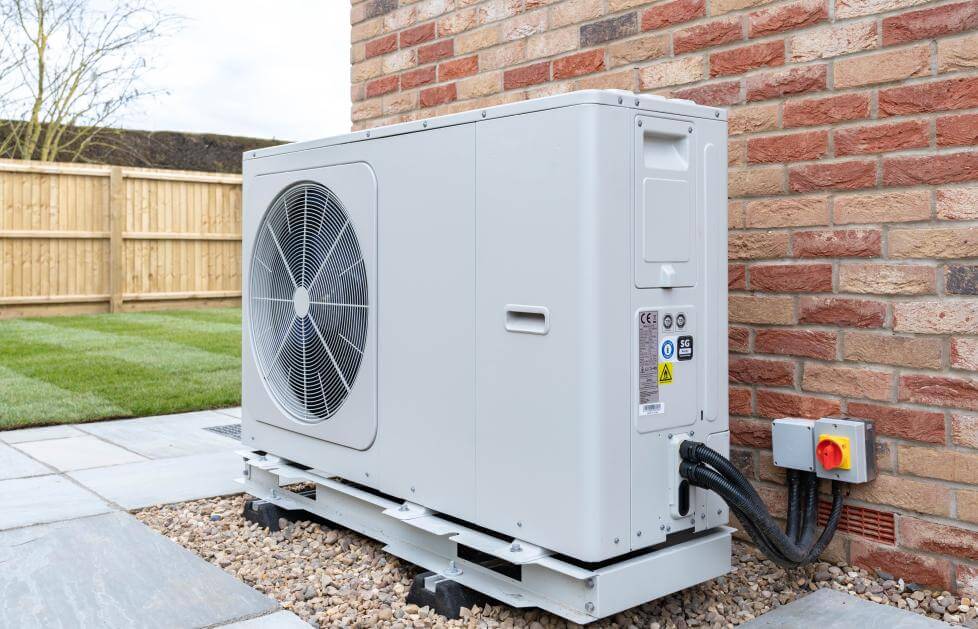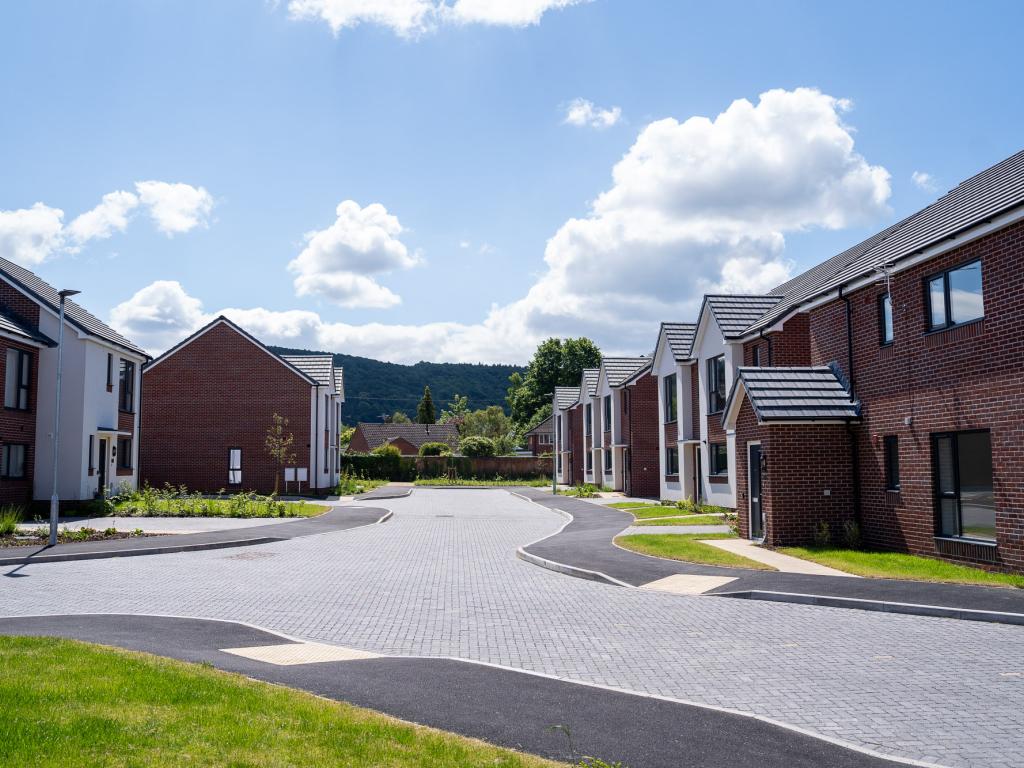
What are Air Source Heat Pumps?
One of the latest innovations in sustainable housebuilding - a key pillar of each Platform development - is the introduction of Air Source Heat Pumps (ASHP). This renewable energy technology extracts heat from the outside air and uses it to provide heating or hot water for buildings.
In simple terms, they operate on the same principle as a refrigerator but in reverse, taking heat from the air and amplifying it so it can be used in heating systems.
ASHP’s represent a sustainable alternative to traditional methods such as gas boilers and, at a time when energy efficiency is such a key focus, they’re an increasingly popular way to reduce carbon emissions.

Air Source Heat Pump Guide
A complete guide to Air Source Heat Pumps, for more information about the renewable energy technology available across some of our developments.
Download the Guide
To maintain transparency with our customers, we wanted to take the time to break down exactly how they work, the various types you might find in a Platform home and the advantages they provide:
How do Air Source Heat Pumps work?
An Air Source Heat Pump operates by using a refrigerant to absorb the heat from any outside air, even during cold temperatures. It works like this:
1. Evaporation: The heat pump’s evaporator absorbs heat from air coming in from the outside using a refrigerant.
2. Compression: The refrigerant is compressed, which increases its temperature.
3. Heat Exchange: The hot refrigerant is passed through the heat exchanger, where the heat is then transferred to a water circuit or air system, which then provides space heating or hot water.
4. Expansion: The refrigerant then cools down, returns to the evaporator and the whole process starts again, creating a sustainable loop.
By utilising the method above, ASHP’s provide heating (potentially through radiators or underfloor heating) and hot water, making them extremely versatile and, importantly, very energy efficient.
What are the different types of Air Source Heat Pumps?
There are typically two types of ASHP’s you’ll find in a property:
1. Air-to-Water Heat Pump: These systems focus on transferring heat to water, which is then used to heat a whole property through a ‘wet’ central heating system, such as radiators or underfloor heating, while also supplying hot water.
2. Air-to-Air Heat Pumps: These systems focus on heating the air inside a building directly, generally through air ducts or wall-mounted units. They’re ideal for properties where a ‘wet’ heating system isn’t already installed.
What are the advantages of Air Source Heat Pumps?
By having Air Source Heat Pumps installed in your home, you benefit from the following:
1. Energy Efficiency: The main reason people choose ASHPs is because of their energy efficiency. They’re able to produce multiple units of heat for every single unit of electricity used. In real terms, an air source heat pump can provide 3 to 4 times more heat than the energy it consumes.
2. Low Carbon Emissions: Since ASHP’s use the air, they generate much lower carbon emissions compared to traditional heating systems that use fossil fuels such as gas or oil boilers. If they’re also powered by renewable electricity, they’re able to achieve near-zero carbon emissions.
3. Renewable Energy Source: Thankfully, air is in abundance and represents a renewable resource, meaning ASHP’s are classified as a renewable technology. As we all look to transition into sustainable energy systems and building practices, this makes them near-essential.
4. Lower Running Costs: ASHP’s generally cost less to run than traditional heating systems, particularly when they’re integrated into a properly insulated building.
5. Lower Maintenance: ASHP’s also require less maintenance than traditional heating systems. As long as they’re checked regularly and essential maintenance is performed (tasks such as cleaning filters), that’s typically all that is required.
6. Incentive Programs: Various government financial incentives are in place to encourage people to adopt ASHP’s. A prime example is the Renewable Heat Incentive (RHI) in the UK, which helps reduce installation costs overall.
What are the challenges of Air Source Heat Pumps?
As with most things, while there are advantages to having an Air Source Heat Pump, there are also several disadvantages:
1. Initial Costs: While it can save money over time, the initial cost of installing an Air Source Heat Pump can sometimes be higher than traditional heating systems, depending on the size and installation. Fortunately, government incentives and the savings over time usually offset this.
2. Space Requirements: Air Source Heat Pumps need an outdoor unit that must be carefully placed to avoid being obstructed by trees, buildings or other potential blockers.
3. Retrofit Challenges: If you’re installing ASHP’s to an existing building, the entire heating system may require upgrades or changes, particularly if you need underfloor heating or larger radiators installed. This is why more housebuilders are installing either the right system or the pumps themselves during the build.
All in all, Air Source Heat Pumps are going to be key as we move to a sustainable future, helping homebuyers reduce their energy bills whilst assisting developers with meeting sustainability targets.

Find Your New Home
Find a brand new home near you with sustainable new home features.
Start Your SearchHome Ownership Policies
Read all Platform Home Ownership policies relating to home ownership.
Find out more
